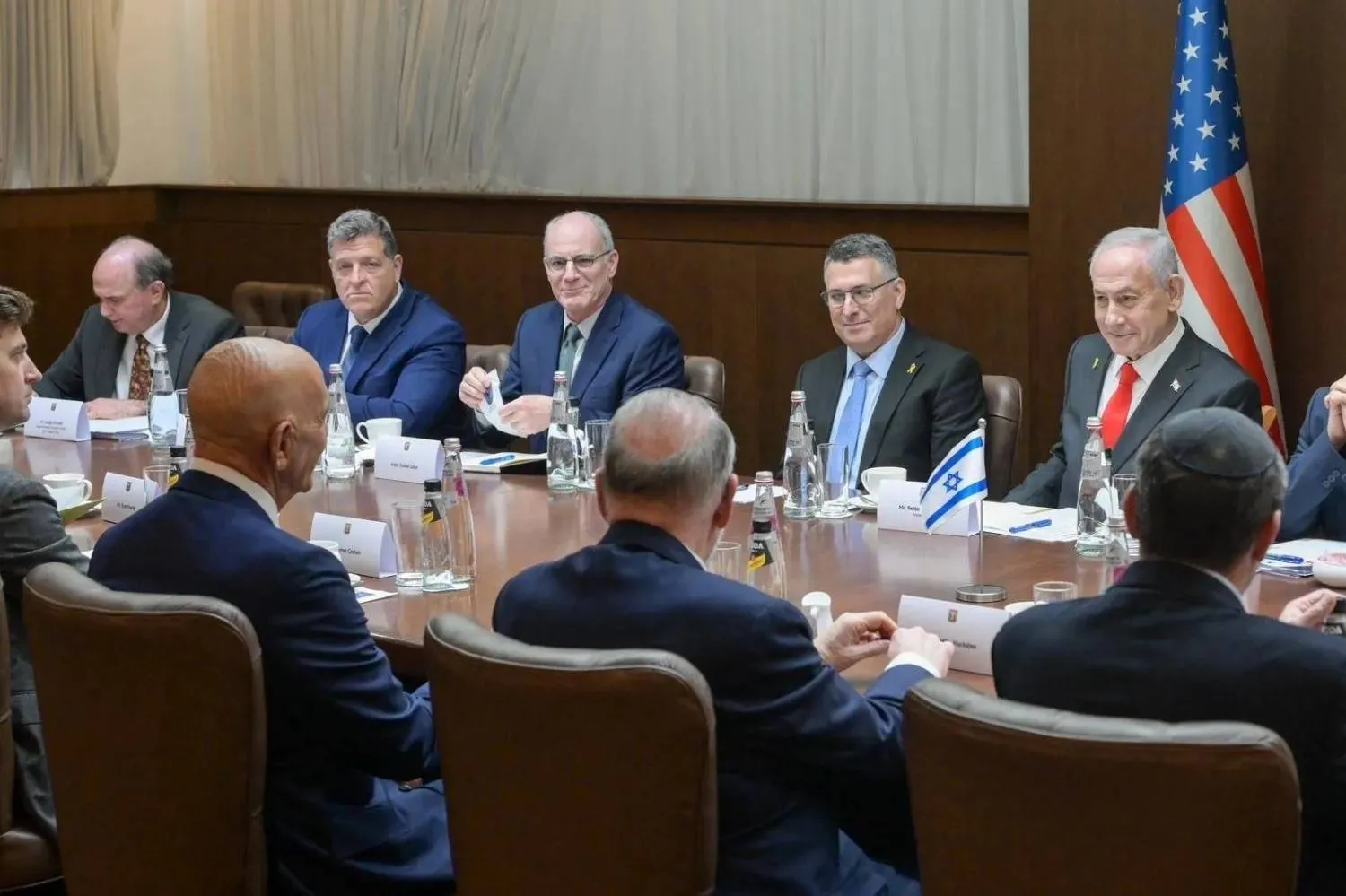Israeli planes dropped leaflets over southern Gaza on Saturday showing a picture of the dead Hamas chief Yahya Sinwar with the message that "Hamas will no longer rule Gaza", echoing language used by Israeli Prime Minister Benjamin Netanyahu.
The move came as Israeli military strikes killed at least 32 people across the Gaza Strip and tightened a siege around hospitals in Jabalia in the north of the enclave, Palestinian health officials said.
“Whoever drops the weapon and hands over the hostages will be allowed to leave and live in peace," the leaflet, written in Arabic, read, according to residents of the southern city of Khan Younis and images circulating online.
The leaflet's wording was from a statement by Netanyahu on Thursday after Sinwar was killed by Israeli soldiers operating in Rafah, in the south near the Egyptian border, on Wednesday.
The Oct. 7 attack Sinwar planned on Israeli communities a year ago killed around 1,200 people, with another 253 dragged back to Gaza as hostages, according to Israeli tallies.
Israel's subsequent war has devastated Gaza, killing more than 42,500 Palestinians, with another 10,000 uncounted dead thought to lie under the rubble, Gaza health authorities say.
In the central Gaza Strip camp of Al-Maghzai, an Israeli strike on a house killed 11 people, while another strike at the nearby camp of Nuseirat killed four others.
Five other people were killed in two separate strikes in the south Gaza cities of Khan Younis and Rafah, medics said, while seven Palestinians were killed in the Shati camp in the northern Gaza Strip.
Late on Friday, medics said 33 people, mostly women and children, were killed and 85 others were wounded in Israeli strikes that destroyed at least three houses in Jabalia.
The Israeli military said it was unaware of that incident.
It said forces were continuing operations against Hamas across the enclave, killing several gunmen in Rafah and Jabalia and dismantling military infrastructure. Palestinian medics said five people were killed in Jabalia on Saturday.
EVACUATION ORDERS
Residents and medics said Israeli forces had tightened their siege on Jabalia, the largest of the enclave's eight historic camps, which it encircled by also sending tanks to nearby towns of Beit Hanoun and Beit Lahiya and issuing evacuation orders to residents.
Israeli officials said evacuation orders were aimed at separating Hamas fighters from civilians and denied that there was any systematic plan to clear civilians out of Jabalia or other northern areas.
Residents and medical officials said Israeli forces were bombing houses and besieging hospitals, preventing medical and food supplies from entering to force them to leave the camp.
Health officials said they refused orders by the Israeli army to evacuate the hospital or leave the patients, many in a critical condition, unattended.
"The Israeli occupation is intensifying its targeting of the health system in the northern Gaza Strip, by besieging and directly targeting the Indonesian Hospital, Kamal Adwan Hospital, and Al-Awda Hospital during the past hours and its insistence on putting them out of service," the Gaza health ministry said.
It said two patients in intensive care at the Indonesian Hospital died "as a result of the hospital's siege and the power outage and medical supplies".
Israel's military said the troops operating in the area had been "briefed on the importance of mitigating harm to civilians and medical infrastructure".
"It is emphasized that the hospital continues to operate without disruption and in full capacity, and there was no intentional fire directed at it," it said.









